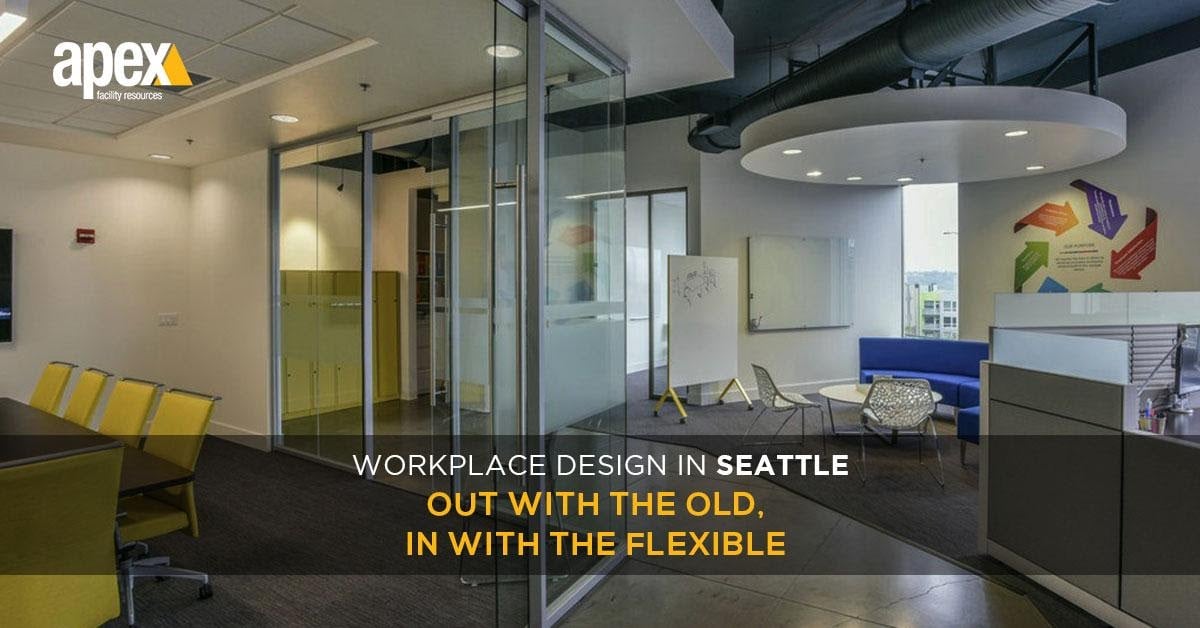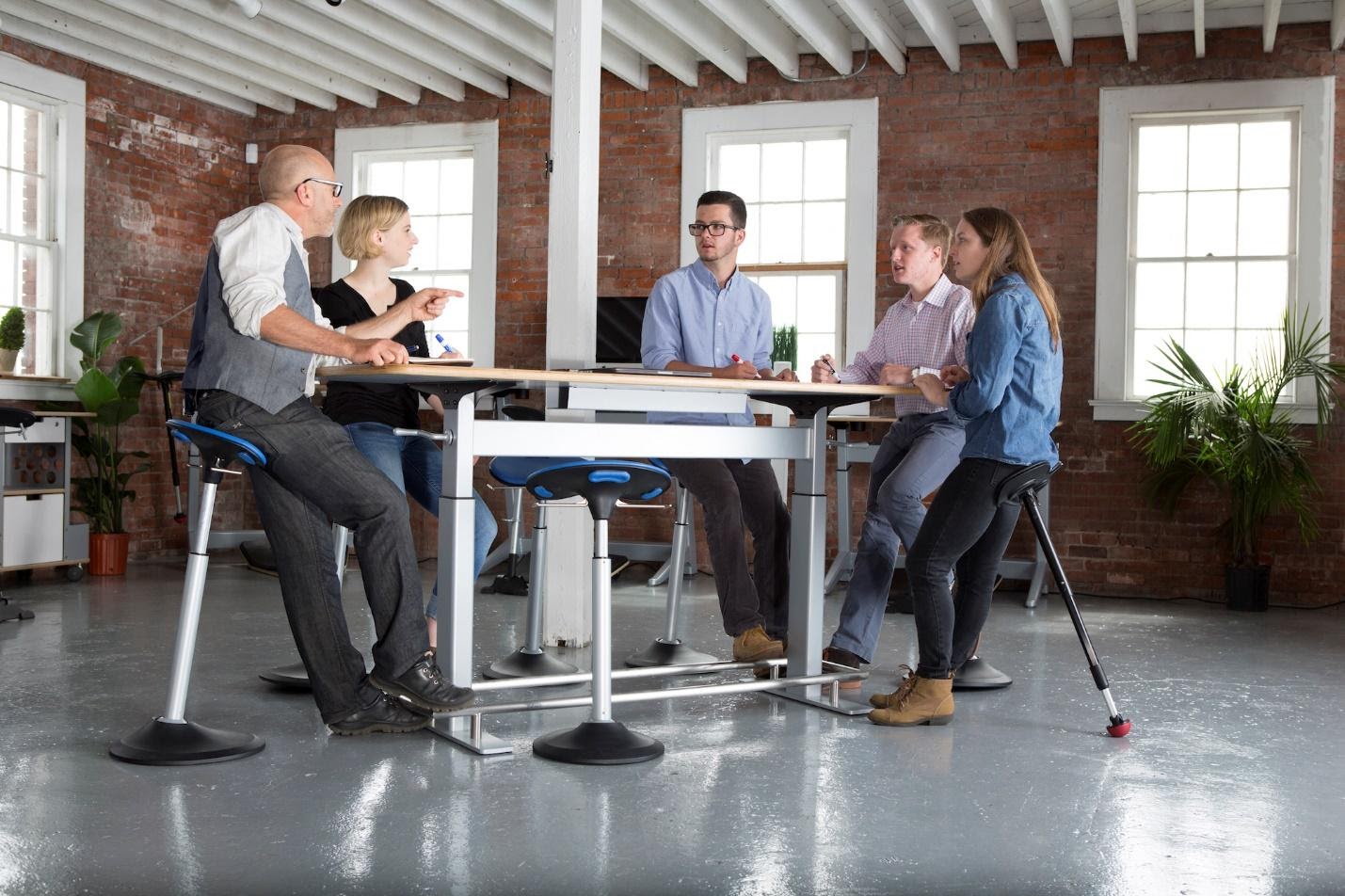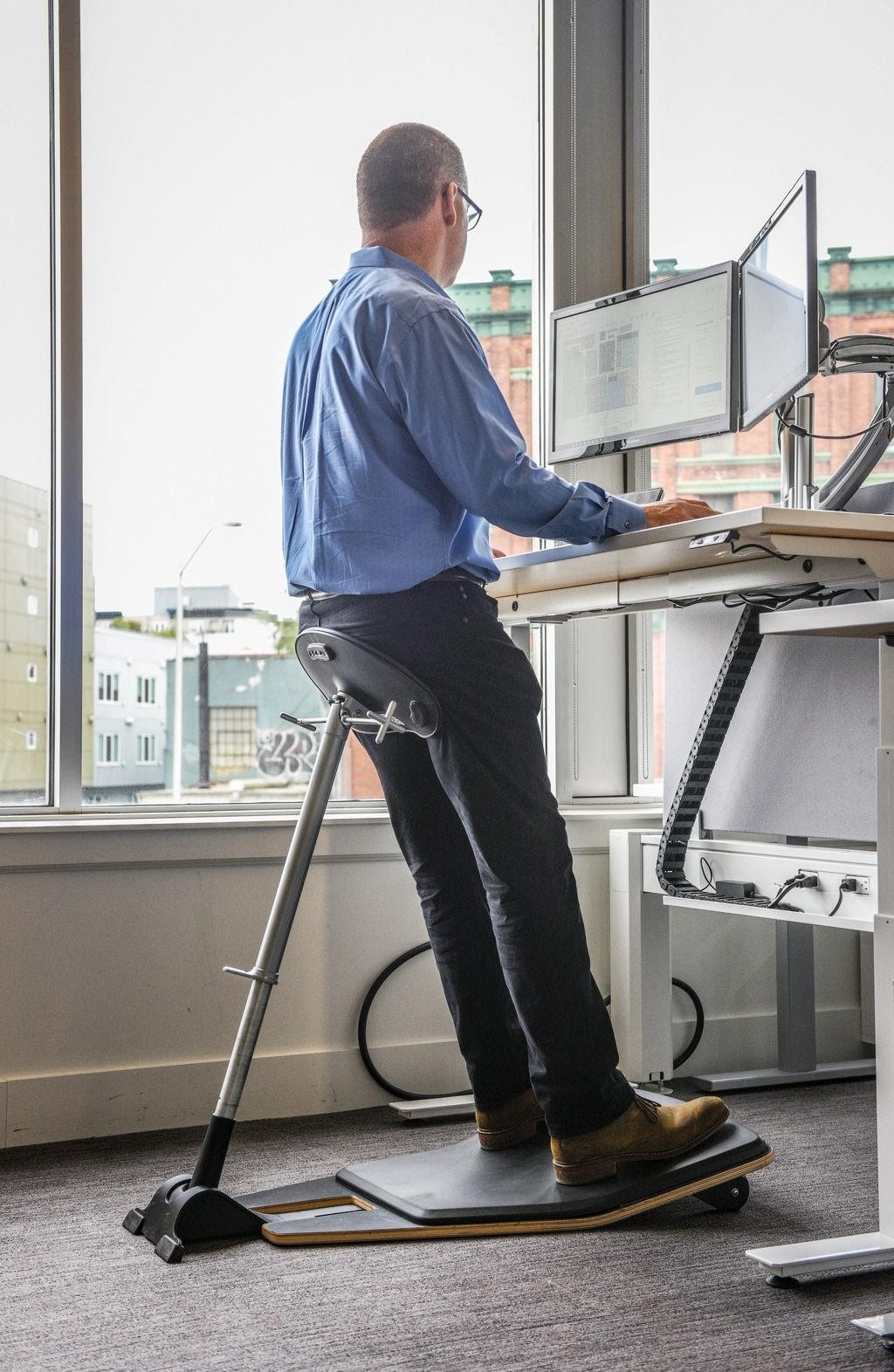
In the last two decades, the American Workplace at large has seen a lot of change. The Open Office Layout once touted as a more collaborative and productive environment that represented a departure from cubicle culture, is now on the way out. Why? It turns out that the Open Office environment, while it may increase collaboration slightly, also decreases employee wellness and productivity, and ups the average amount of sick days workers take. Luckily, a new strategy for Workplace design is taking the American Workplace by storm, with promising results. Enter Flexible Workplace Design, a strategy that provides multiple environments for workers within a single space; an open layout that includes a combination of cubicle banks, secluded offices, conference rooms, and collaborative environments to accommodate the variety of tasks and workflows that the modern worker is familiar with.
Thanks to the ubiquity of virtual connectivity, documents, resources, and tools are no longer fixed to specific locations. So why force your employees to be? Flexible workplace design is a direct response to the changes in workflow, productivity, and mobility that technological advances have inspired over the last several decades. Fluid and flexible workspaces maximize space utilization and promote employee productivity and wellness.
The Benefits of a Flexible Workplace

1. Good for Groups
- Advances in technology have mobilized us, but they’ve also greatly reduced the need for face-to-face interaction. A data-based article published in the Harvard Business Review, however, found that “face-to-face interaction is by far the most important activity in an office.” A flexible workspace offers unexpected opportunities for interaction and collaboration within the variety of environments it provides.
2. Good for Individuals
- The same flexibility that engenders collaboration and interaction can also give employees the freedom to choose how and where they’re working. An employee who has the freedom to find their best-fit work environment is likelier to be more comfortable, productive, happy, and, most importantly, healthy.
3. Saves Money
- Flexibility is a great way to maximize spatial efficiency and accommodate growth or changing needs within your company. Multi-use furniture and spaces cut real estate costs and make more room for employees in less space.
4. Increases Employee Engagement
- Allowing employees to have a say in how and where they’re working can increase engagement. Each employee knows what workflow and setting is best for them, working comfortably cuts down on distractions.
How to Create a Flexible Workplace

1. Foster Collaboration
- Facilitate interaction between employees, teams, and departments. Flexible workplace design has largely done away with closed-off cubicles and even offices. Movable, ergonomic furniture gives employees the opportunity to create different workspaces throughout an office as the need arises while receiving the support they need.

2. Encourage Employee-Set Hours
- Flexible workplace design can mean more than a new floor plan. If workspaces are fluid, why not let work hours be the same? In the same way that employees benefit from having autonomy within a space, providing flexibility with hours can lead to better engagement.
3. Provide a Balance of Open v. Private Space
- Too much of a good thing can be a bad thing. Just as research has shown that the privation of high-walled has a diminishing effect on productivity and job satisfaction, too little privacy can be overly stimulating and distracting. Letting employees choose how they work means giving them options to choose from.
4. Work with Apex Facility Services
- Designing flexible workplaces is a business unto itself and Apex Facility Services are leaders of workplace design in Seattle. Our specialty is helping workplaces transition into new spaces with updated workplace designs.
Make the Change Today
There’s no denying it’s more than a trend. Workplace design in Seattle and beyond has followed the research; more and more organizations are providing employees with flexible workspaces. The benefits to productivity, employee well-being, and all-around costs-savings are too irresistible.
If you’re interested in discovering the full potential of your workplace, don’t hesitate, contact Apex today!



